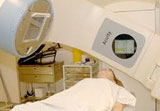Intraoperative Cancer Radiotherapy
With cancer affecting a vast percentage of the entire population, medical researchers have moved forward with the enhancement of various types of treatments. Among one of the oldest treatments is the conventional external beam therapy, which has given way to other treatments using modern technology. One of the newer treatments is intraoperative cancer radiotherapy, which is simply known as IORT–incontrast to chemotherapy, intraoperative cancer radiotherapy treats the problem locally rather than generally. This decreases the chances of damaging other healthy areas of the patient’s body.
Conditions Treated With Intraoperative Radiotherapy
Intraoperative cancer radiotherapy happens to be quite effective with cancers that are inoperable, hence the name of intraoperative. The main reason of its effectiveness is that the radiation is capable of treating tumors that are extremely close – or even attached – to important organs. When this happens, doctors won’t be able to operate because the risk of creating more damage to other organs is far too high. One clear example of this type of cancer is rectal cancer, which happens to be extremely difficult to remove due to the area where it’s located. Consequently, intraoperative cancer radiotherapycan be used to try to treat this condition, in addition to cancer in the following areas:
- Sarcoma
- Cervix
- Kidney
- Prostate
- Ovaries
- Uterine
- Anal
- Stomach
- Pancreas
- Colon / rectum/ anus
Research and Clinical Trials
Almost every breakthrough that has been done in the last decades has been due to the success of clinical trials. Medical researchers are constantly investigating and studying current therapies in an attempt to make them even more effective. Intraoperative cancer radiotherapy was certainly a product of a series of experiments and clinical trials that started in the early 1900s. A team of Spanish doctors along with a team of German doctors put together the first intraoperative cancer radiotherapy machine but the radiation level was considerably low. This didn’t allow them to disintegrate the tumors as they had expected; the only way they could have been successful would have been by raising the radiation level, but this would had posed extreme danger to the participants. In addition, current clinical trials performed by the Mayo Clinic have proven that patients that received intraoperative cancer radiotherapyhave gained higher survival rates.
Benefits of Intraoperative Treatment
Even though intraoperative cancer radiotherapy is fairly new, it has proven to be quite effective when treating inoperable tumors or cancerous masses. Certainly, it has given hope to those who suffer from complicated types of cancer, such as colorectal cancer, where operating them could pose a higher risk of death. Therefore, one of the most important benefits of using intraoperative cancer radiotherapy is the fact that cancer can be treated even if it’s considerably close to a vital organ. Moreover, intraoperative cancer radiotherapy presents the following benefits:
- Capacity of higher radiation – which means better penetration and overall improved treatment
- Quicker radiation distributionduring surgical procedure
- Application of the treatment is overall less dangerous than other types of radiotherapy
- More protection of the healthy tissue and/or cells

